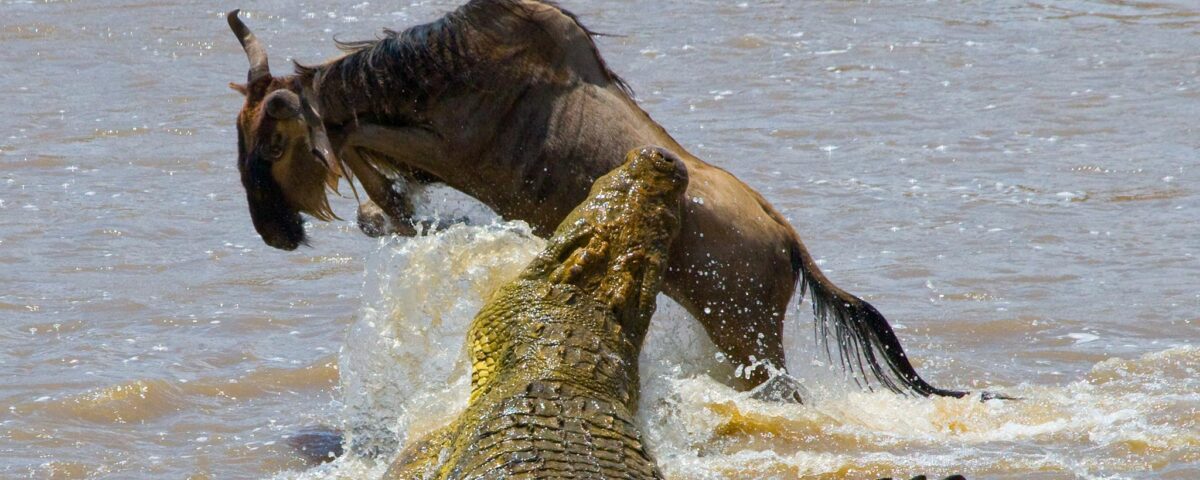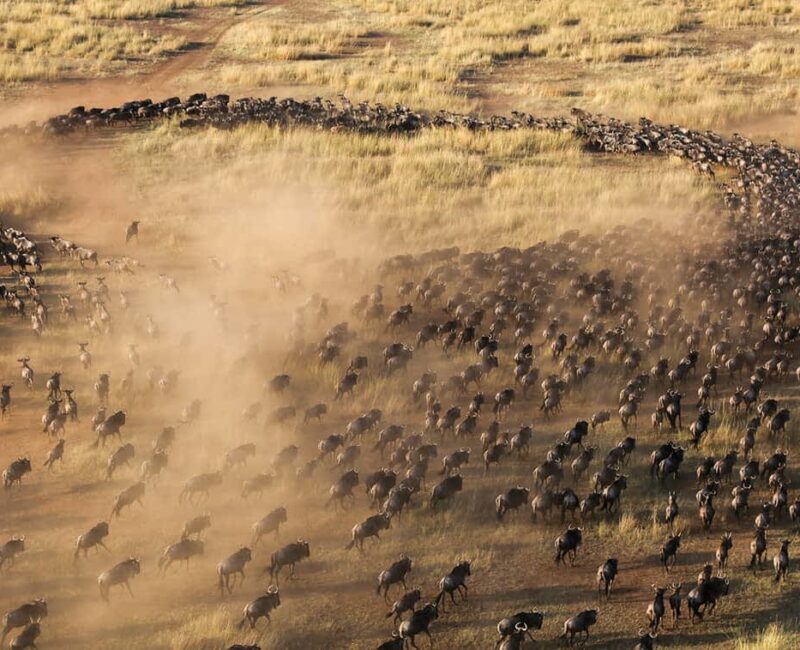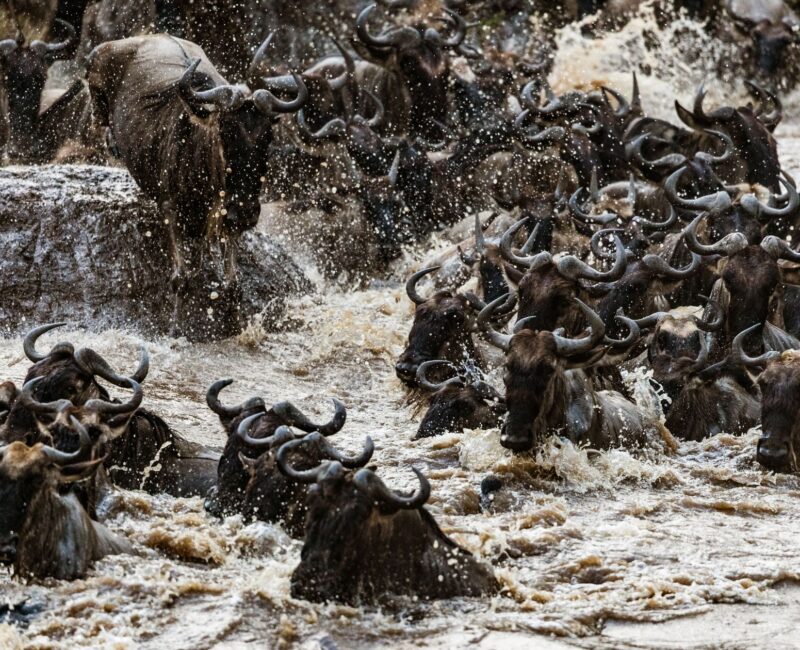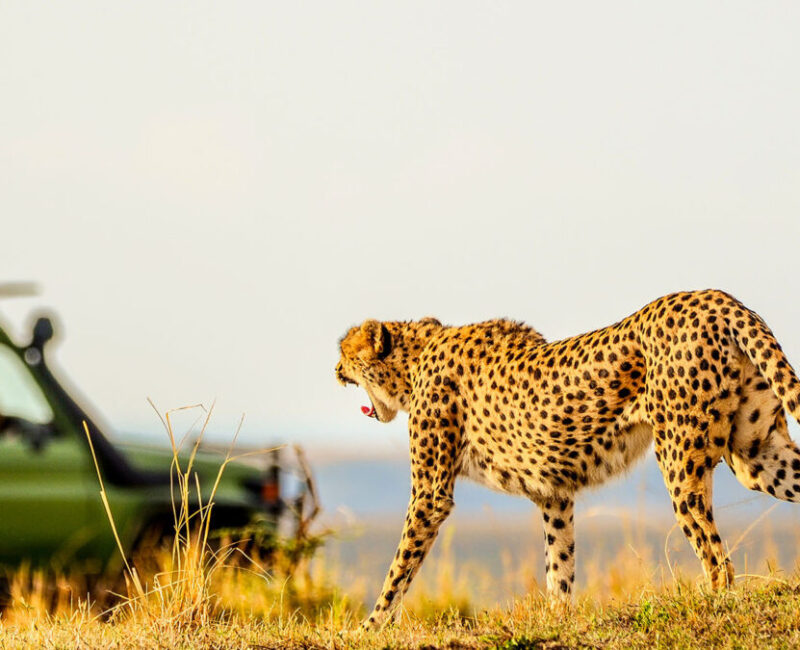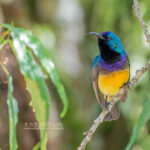
Can I Combine Wildlife Safaris with Birding Safaris in Uganda?
October 28, 2025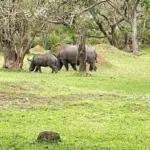
Can I See Rhinos During Uganda Wildlife Safaris?
October 28, 2025Can I See Predators During the Great Migration?
One of the most thrilling questions for safari enthusiasts planning an African adventure is: Can I see predators during the Great Migration? At Nkofu Africa Safaris, we understand that wildlife lovers are drawn not only to the awe-inspiring spectacle of millions of wildebeest, zebras, and gazelles moving across the plains but also to the raw drama of predator-prey interactions that unfold during this annual migration. The Great Migration, considered one of the world’s most iconic wildlife events, occurs across Kenya Safaris and Tanzania Safaris, traversing the Maasai Mara in Kenya and the Serengeti in Tanzania, offering unparalleled opportunities to observe lions, cheetahs, leopards, and crocodiles in action.
Kenya Wildlife Safaris and Tanzania Wildlife Safaris during this period are the ultimate destination for travelers seeking to witness nature’s most spectacular hunting and survival moments. Predators are highly active as they follow the migration, creating unforgettable encounters for safari-goers. Many travelers combine these adventures with Rwanda Gorilla Trekking Safaris or Uganda Gorilla Trekking Safaris, creating a multi-country East African safari that blends open savannah predator viewing with primate trekking in lush forests.
In this article, we’ll explore in detail Can I see predators during the Great Migration? by highlighting predator behaviors, ideal viewing periods, cultural experiences along the migration routes, birding opportunities, and the possibility of combining these experiences with other East African wildlife adventures, including Tanzania Chimpanzee Tracking Safaris and Kenya Birding Safaris. We aim to provide expert insights for travelers seeking a once-in-a-lifetime safari experience.
The Great Migration: Nature’s Ultimate Wildlife Spectacle
To answer the question, Can I see predators during the Great Migration?, it is essential to understand the scale and dynamics of this extraordinary phenomenon. The Great Migration involves over two million wildebeest, zebras, and gazelles moving in a circular pattern between Tanzania’s Serengeti and Kenya’s Maasai Mara in search of fresh grazing and water. This annual movement, driven by seasonal rainfall, creates natural predator hotspots where carnivores thrive.
Predators such as lions, cheetahs, and leopards track the migration, capitalizing on the high density of prey. The river crossings, particularly at the Mara River, are intense moments where crocodiles lie in wait, adding to the thrilling drama. Travelers on Kenya Safaris can witness lions ambushing herds on the open savannahs, cheetahs sprinting to capture gazelles, and leopards stealthily navigating acacia trees to stalk their prey. This predator activity peaks between July and October, coinciding with the Maasai Mara migration season.
Beyond predator viewing, the migration offers opportunities for Kenya Birding Safaris, as scavengers and birds of prey follow the herds, creating a dynamic ecosystem of interactions. For those interested in multi-country adventures, combining Tanzania Safaris with Rwanda Gorilla Trekking Safaris or Uganda Gorilla Trekking Safaris provides a contrasting wildlife experience, where predators dominate open plains and primates inhabit dense forests. Nkofu Africa Safaris emphasizes that understanding predator behavior enhances appreciation for the intricate balance of African ecosystems during the Great Migration.
Predator Species You Can Expect to See
So, Can I see predators during the Great Migration? Absolutely — the diversity and density of carnivores along the migration route are remarkable. Lions, Africa’s top terrestrial predator, are highly visible as they often hunt in prides near river crossings and open plains. The dramatic scenes of lions ambushing wildebeest or coordinating group hunts are among the most photographed moments on Kenya Wildlife Safaris.
Cheetahs, the fastest land mammals, provide a different thrill. Unlike lions, they rely on stealth, speed, and agility, often hunting smaller antelope like Thomson’s gazelles. Visitors on Tanzania Wildlife Safaris in the Serengeti can spot cheetahs sprinting across open plains, delivering moments of pure adrenaline. Leopards, more elusive and solitary, often climb trees to observe prey or drag their catch to safety, providing safari-goers with a subtler but equally captivating wildlife encounter.
Hyenas, jackals, and wild dogs are also integral to the predator dynamic during the migration. While hyenas often scavenge, wild dogs hunt cooperatively in packs, showcasing strategic hunting methods rarely observed elsewhere. Nkofu Africa Safaris notes that witnessing these predator interactions during the Great Migration is one of the defining experiences of Kenya Best Safaris and Tanzania Best Safaris.
Combining predator viewing with Tanzania Chimpanzee Tracking Safaris or Rwanda Gorilla Trekking Safaris creates an immersive multi-habitat experience, offering a unique contrast between savannah predators and rainforest primates. By understanding predator behavior, travelers gain insights into ecological balance, survival strategies, and the raw power of Africa’s wildlife.
Timing and Best Viewing Spots for Predator Encounters
When asking, Can I see predators during the Great Migration?, timing and location are key factors. Predators follow the migration closely, and knowing their likely positions enhances the safari experience. In Kenya, the Maasai Mara’s southern plains and Mara River crossings between July and October are prime locations for observing lion ambushes and crocodile attacks. The Mara’s open grasslands make predator sightings more accessible and dramatic.
In Tanzania, the Serengeti’s western corridor, Seronera Valley, and Ndutu area are crucial predator hubs during the peak migration months. Early morning and late afternoon game drives offer the best lighting for photography and increased predator activity. Rangers and guides employed by Nkofu Africa Safaris are experts in locating these interactions, providing detailed insights into animal behavior while maintaining safety and ethical viewing standards.
Travelers combining Tanzania Safaris with Kenya Safaris enjoy a continuous migration experience, observing predators across different ecosystems. Additionally, integrating Rwanda Gorilla Trekking Safaris or Uganda Gorilla Trekking Safaris allows visitors to contrast predator-dominated savannahs with tranquil rainforest habitats, highlighting the diversity of East African wildlife. Strategic timing and expert guidance ensure that predator sightings are maximized, making the Great Migration an unforgettable safari highlight.
Cultural Experiences Along the Migration Routes
Many visitors ask, Can I see predators during the Great Migration and still experience local culture? The answer is yes. Alongside the wildlife spectacle, travelers on Kenya Cultural Safaris or Tanzania Cultural Safaris can engage with the Maasai, Sukuma, and other indigenous communities living near migration corridors. Traditional dances, beadwork demonstrations, and guided village tours offer insights into how local communities coexist with wildlife.
These cultural interactions add depth to Kenya Safaris or Tanzania Safaris, providing understanding of land-use practices, conservation efforts, and traditional knowledge of predator behavior. Visitors can witness how communities protect livestock from lions or collaborate in conservation programs, adding a human dimension to wildlife observation.
For travelers combining Uganda Gorilla Trekking Safaris with predator-focused adventures, cultural tours in Bwindi or Mgahinga complement their multi-country experience. Engaging with local communities enhances sustainability, supports local economies, and enriches the overall safari narrative, showing that predator encounters can be experienced alongside meaningful cultural learning.
Birding Opportunities During Predator Sightings
For enthusiasts asking, Can I see predators during the Great Migration and still enjoy birding?, the answer is yes. Predators’ presence attracts scavengers and opportunistic birds, creating dynamic ecosystems for birdwatchers. Raptors like martial eagles, vultures, and bateleur eagles soar above, tracking lions and hyenas, while smaller birds exploit the movement of prey.
Kenya Birding Safaris and Tanzania Birding Safaris benefit greatly from migration-driven predator activity, as these areas provide concentrated opportunities to observe species interactions. Birders can photograph predators with a backdrop of soaring birds, offering a multidimensional wildlife viewing experience.
Combining birding with predator-focused Kenya Wildlife Safaris or Tanzania Wildlife Safaris, and even Rwanda Gorilla Trekking Safaris, creates an unforgettable itinerary for travelers seeking to witness the full complexity of East Africa’s ecosystems. Predator sightings, bird interactions, and migration movement combine to create one of the most photogenic and ecologically rich safari experiences on the continent.
Combining Predator Viewing with Gorilla and Chimpanzee Safaris
A natural question arises: Can I combine predator encounters during the Great Migration with primate trekking in East Africa? The answer is a resounding yes. Many travelers integrate Tanzania Chimpanzee Tracking Safaris in Mahale Mountains or Gombe Stream with Tanzania Safaris and Kenya Safaris, while also extending to Uganda Gorilla Trekking Safaris in Bwindi or Mgahinga.
This combination offers an unparalleled contrast: open plains filled with lions, cheetahs, and hyenas juxtaposed against lush rainforests where gorillas and chimpanzees thrive peacefully. Nkofu Africa Safaris crafts itineraries that allow seamless movement across countries, ensuring that travelers witness both predation in savannah ecosystems and the gentle interactions of primates in tropical forests.
Combining predator viewing with gorilla or chimpanzee safaris enhances understanding of East Africa’s biodiversity. Travelers experience the predator-prey dynamics, the intricacies of rainforest ecology, and the conservation efforts that protect these species. This multi-habitat, multi-country approach is ideal for those seeking the ultimate East African safari.
Conclusion: Can I See Predators During the Great Migration?
In conclusion, Can I see predators during the Great Migration? The answer is an emphatic yes. Nkofu Africa Safaris confirms that the Great Migration offers unrivaled opportunities to witness lions, cheetahs, leopards, crocodiles, and wild dogs in their natural hunting behaviors. Whether on Kenya Wildlife Safaris, Tanzania Wildlife Safaris, or combining experiences with Rwanda Gorilla Trekking Safaris or Uganda Gorilla Trekking Safaris, travelers gain access to one of the world’s most dramatic wildlife spectacles.
Beyond predator sightings, the migration also provides birding opportunities, cultural interactions, and the chance to explore diverse landscapes, making it a multifaceted safari adventure. Combining predator-focused safaris with primate trekking, Kenya Birding Safaris, or Tanzania Chimpanzee Tracking Safaris allows travelers to experience the richness of East African wildlife in a single trip.
Ultimately, predator viewing during the Great Migration is a hallmark of Kenya Best Safaris and Tanzania Best Safaris, offering a thrilling, educational, and unforgettable experience. For safari enthusiasts seeking to witness Africa’s raw beauty, the Great Migration, combined with primate trekking and cultural exploration, is the ultimate adventure — a journey that epitomizes the spirit of East Africa.

